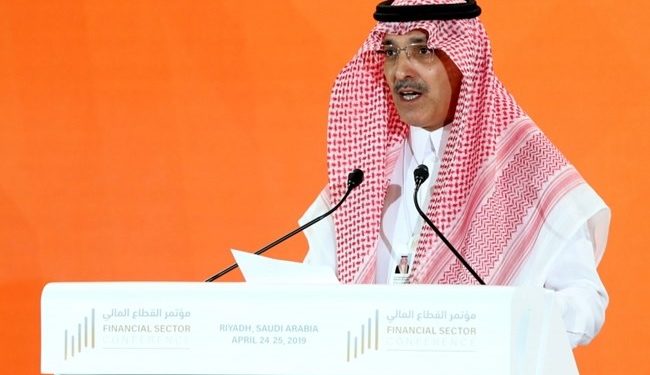Saudi Arabia plans to gradually reduce government spending as private-sector growth picks up and businesses take the lead, Finance Minister Mohammad al-Jadaan said Thursday. Spending is expected to fall from about 1.05 trillion riyals ($280 billion) this year to 1.02 trillion riyals in 2020, then to 955 billion riyals by 2022, according to a prebudget statement issued by the Finance Ministry Thursday.
That won’t mean an early fall in the deficit, with the government of the biggest Arab economy expecting the shortfall to rise to 6.5 percent of the gross domestic product next year, compared to 4.7 percent in 2019. That’s slightly above a 4.2 percent forecast but well below a median estimate in a Bloomberg survey of economists for a shortfall of 7.1 percent.
The decline in spending comes as Crown Prince Mohammad bin Salman’s overhaul of the oil-dependent economy shows signs of progress, Jadaan told reporters in Riyadh. “We believe at one stage you will need to start plateauing and then reducing your government spending as the economy picks up,” he said. “Some of the spend that we would have otherwise made next year and the year after is now being made by the private sector.”
The government started providing a preliminary budget outlook for the first time last year as part of an effort to make its public accounts more transparent and kept the figures largely unchanged in its final fiscal program.
Other key figures released Thursday include:
- 2020 revenue seen at 833 billion riyals versus an estimated 917 billion riyals in 2019.
- 2019 budget deficit seen at 131 billion riyals, rising to 187 billion riyals in 2020 before falling to 92 billion riyals in 2022.
- Economic growth is estimated at 2.3 percent in 2020 compared with 0.9 percent this year. Officials have revised down GDP for this year from 2.6 percent.
- Public debt next year seen at 754 billion riyals versus 678 billion riyals in 2019.
- A breakdown of oil and non-oil revenue should be provided in the final budget announcement in December, Jadaan said.
- The government expects deflation of 1 percent this year, with 2 percent inflation in 2020.
Saudi Arabia has tried to keep the fiscal taps open without blowing a bigger hole in the budget as it steers the economy from its near-total dependence on crude.
Despite the acceleration in non-oil growth this year to the fastest since 2015, output curbs negotiated by OPEC are increasingly a drag.
The attack on Saudi oil infrastructure in September also put the spotlight on risks ahead.
“The deficit estimate for 2019 still looks optimistic, based on our oil price estimate,” said Monica Malik, chief economist for Abu Dhabi Commercial Bank.
“The key message is one of fiscal prudence while spending is still remaining quite high,” she added.
“I think it would have been difficult for Saudi [Arabia] to announce a very expansionary budget with the oil price at the current level.”
Still, the kingdom has started to make some headway. It’s the only OPEC producer in the Gulf to cut its break-even oil price both this year and next, according to the International Monetary Fund. Saudi Arabia’s goal is to run a balanced budget in 2023.
The Daily Star
02/11/2019
























































